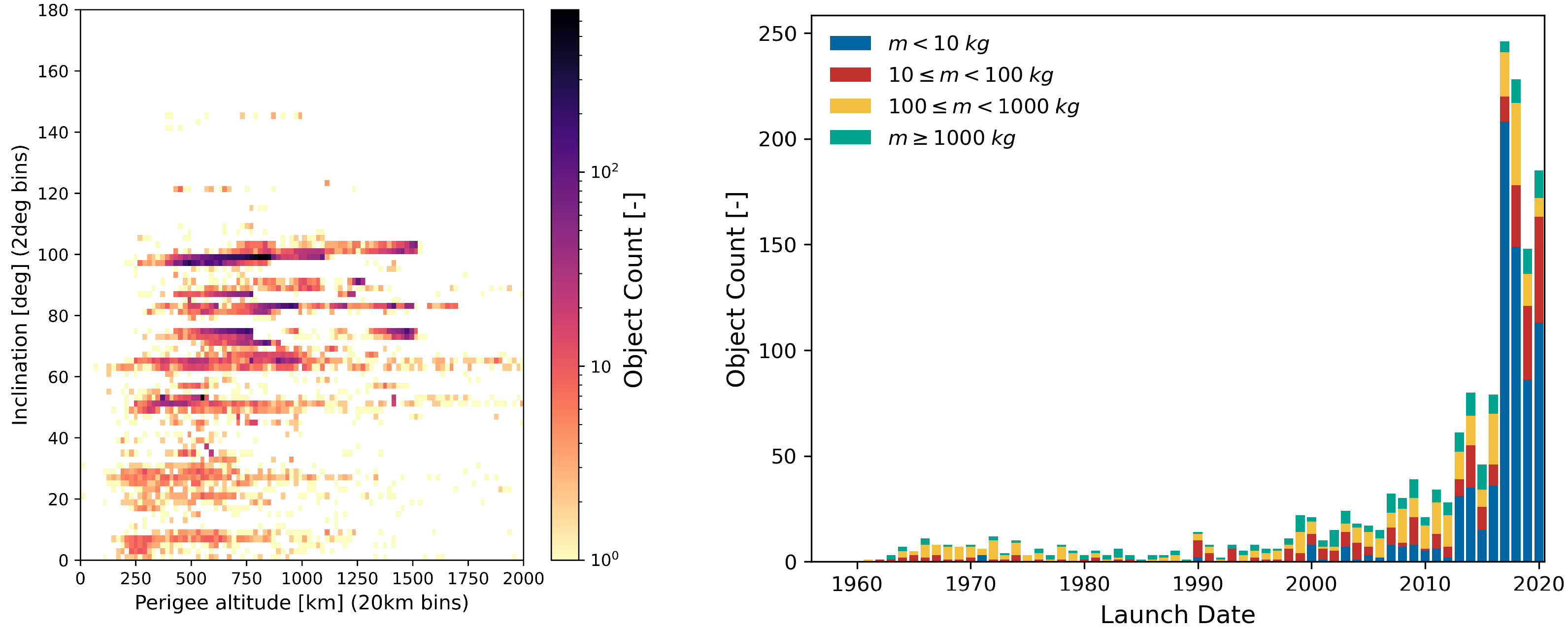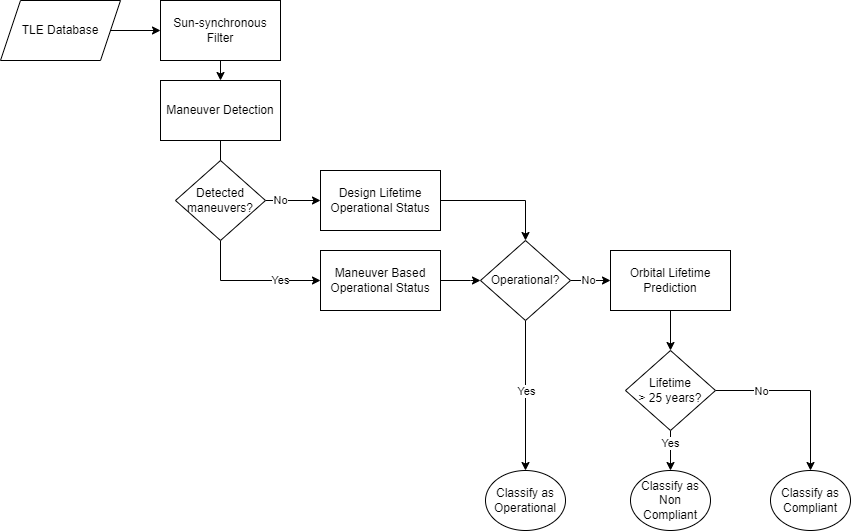Sun-Synchronous Spacecraft Compliance with International Space Debris Guidelines
2021
Research was published in Advances in Space Research on 15th July, 2022.
Can be accessed online at: https://doi.org/10.1016/j.asr.2022.07.011
Introduction
Due to ever increasing accessibility, recent years have seen a fast growing number of launches to space, especially to Sun-synchronous orbit. The spent rocket parts, and eventually non-functioning payloads of these launches remain in orbit. It is well established that this accumulation of space debris over time is quickly making this the most severe threat to future spaceflight operations. To address this, international guidelines have been established including a maximum of 25-year remaining orbital lifetime after end of operational life. My research evaluated if Sun-synchronous satellites adhere to this guideline.
LEO DISTRIBUTION [L]
SSO PAYLOAD TRAFFIC [R]

Method
To determine the compliance, the operational status of satellites with orbital control capabilities was established using a maneuver detection algorithm. For satellites without this capability, a model was created based on mass and design lifetime. The remaining orbital lifetime was determined using semi-analytic propagation.
CLASSIFICATION
FLOWCHART

"The relative popularity of SSO may demand re-evaluation of current guidelines to sustain future operations in these valuable orbits"
Results
The results revealed that compliance was poor in the past, with 20 to 40% prior to 2014, but has increased to 95% in 2018. Satellites with a mass lower than 10 kg have a compliance of 86% compared to 35% for heavier satellites. Analysis showed that compliance is mostly a result of choosing an operational orbit with a sufficient natural decay, and less due to altitude lowering maneuvers near end-of-life. The relative popularity of SSO may demand re-evaluation of current guidelines to sustain future operations in these valuable orbits.